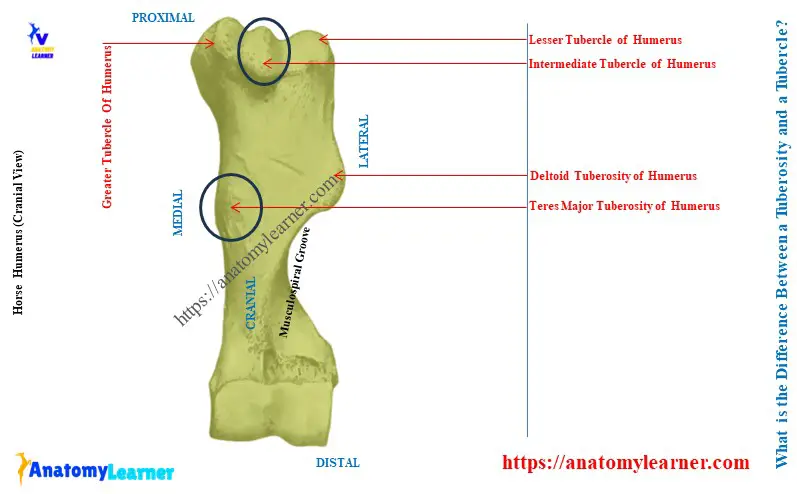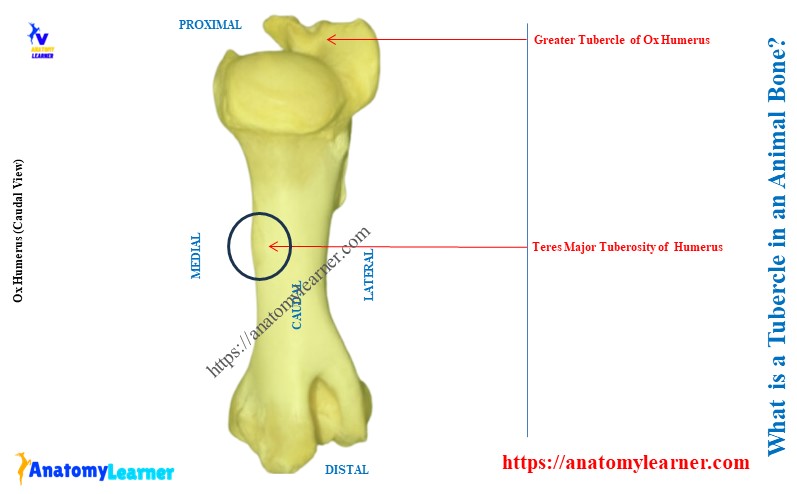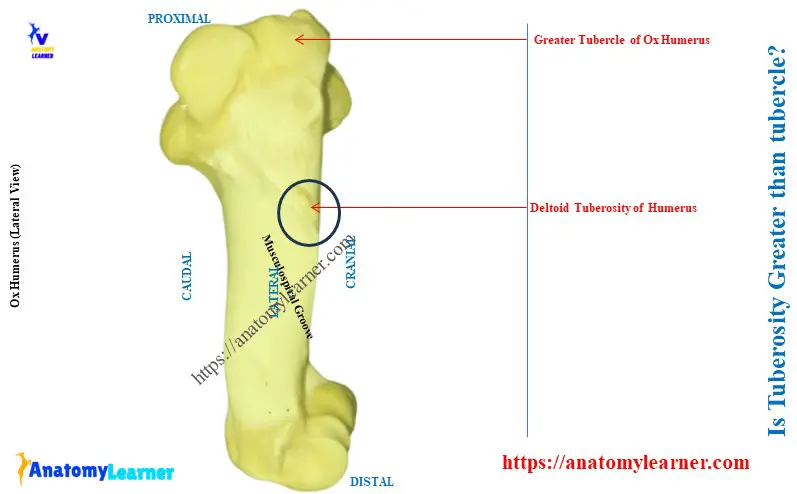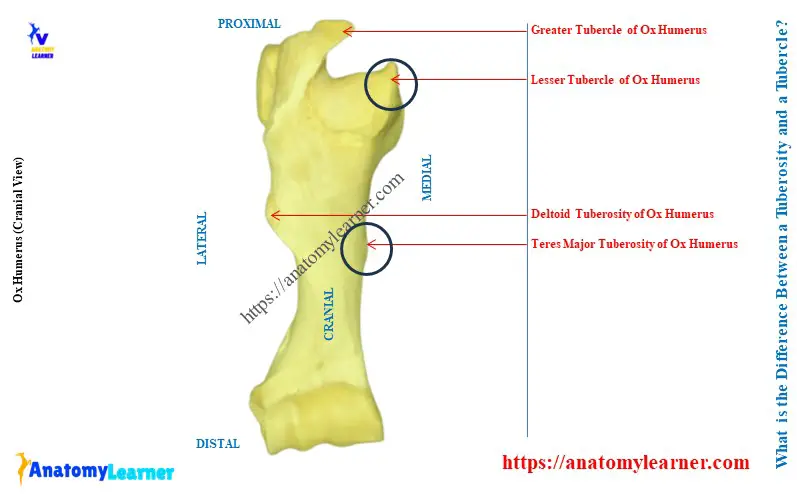The terms’ tuberosity’ and ‘tubercle’ are the projections of a bone in different forms. Here, you will know the exact answer to the question – what is the difference between a tuberosity and a tubercle?
Quick answer: tuberosity is a large, round, rough bone projection. In contrast, the tubercle is a small projection of a bone.
I will describe these two terms, ‘tuberosity’ and ‘tubercle,’ with practical examples. So, to understand these terms and apply them in different bones, let’s continue the explanation.
What is the difference between a tuberosity and a tubercle?
Explanation: an outgrowth of any bone is the projection or prominence. These bony projections may be in different forms. Sometimes, they may be in the form of a tuberosity or tubercle. They may even be in the form of a trochanter or process.
First, let’s see the example to understand the forms of the tuberosity and tubercle. Here, the diagram shows the horse’s humerus bone. The medial surface of the body shows a large, rounded, and rough projection. The tuberosity is the large, round, and rough projection of the horse humerus bone.

Now, the diagram focuses on the proximal extremity of the horse humerus bone. Here, the identified structures are the greater and lesser tuberosities.
A small bony projection is also identified in between these tuberosities. It is comparatively small and smooth compared to the greater and lesser tuberosities. This small and smooth bony projection on the proximal extremity of the horse humerus is the tubercle.
Now, you may easily define the terms’ tuberosity, and ‘tubercle’ with different examples from different bones.
What is a tuberosity in an animal bone?
Answer: if there is any large, rounded, and rough bony projection on the bone, then it is termed tuberosity. The projection of bone will be tuberosity if it follows the following –
- It must be the comparatively large bony projection,
- It will be in the form of a rounded structure and externally possess a rough surface,

But, you will only sometimes find the typical round-shaped tuberosity on the bones. Let’s see some of the examples from the bones of ox or goat skeletons –
Examples of tuberosity in ox bones
- Teres major tuberosity on the medial aspect of the horse humerus bone (typical example),
- Greater and lesser tuberosities on the proximal extremity of the ox humerus bone,
- Radial tuberosity on the cranio-medial aspect of the proximal extremity of the ox radius bone,
- Deltoid tuberosity on the cranial surface of the ox and horse humerus bones,
- Olecranon tuberosity of the ox ulna bone,
- Tibial tuberosity of the ox tibial bone,
You will also find different tuberosities in the bones of the animals. I have already described the osteological features of varying animal bones with their specific features. So, you may learn from these descriptions whether a bone has tuberosity or tubercles.
What is a tubercle in an animal bone?
Answer: if there is any small bony projection, it is termed the tubercle. So, a bony projection may be tubercle when it follows the following –
- It is a comparatively small bony projection,
- The external surface of this bony projection is not rough like the tuberosity; rather, it possesses a smooth surface,
- There is no specific shape of this bony projection; it may be rounded or in other forms,
Now, let’s look at typical examples of the tubercle of the animal bone. That might also provide a clear concept of the tuberosity of animal bones.

Examples of tuberosity in animal bones
- Intermediate tubercle on the proximal extremities of the horse humerus bone,
- Facial tubercle on the maxilla bone of the ox,
- Supraglenoid tubercle on the medial aspect of the scapular glenoid cavity,
- Coxal, sacral, and ventral tubercles of the ox hip bones,
Is tuberosity greater than tubercle?
Answer: yes, the tuberosity is greater than the tubercle of any particular bone. If you notice the examples of tuberosities and tubercles mentioned above, you will find the tuberosities are larger than the tubercles.

Here, the diagram shows the tuberosity and tubercle from the horse humerus bone. It also showed a larger tuberosity and a smaller tubercle.
Conclusion
So, the tuberosity is the larger, round, and rough projection of any skeleton bone. On the other hand, the tubercle is a small and smooth projection of the bone. The shape of the tuberosity and tubercle may vary from round to other different forms.

